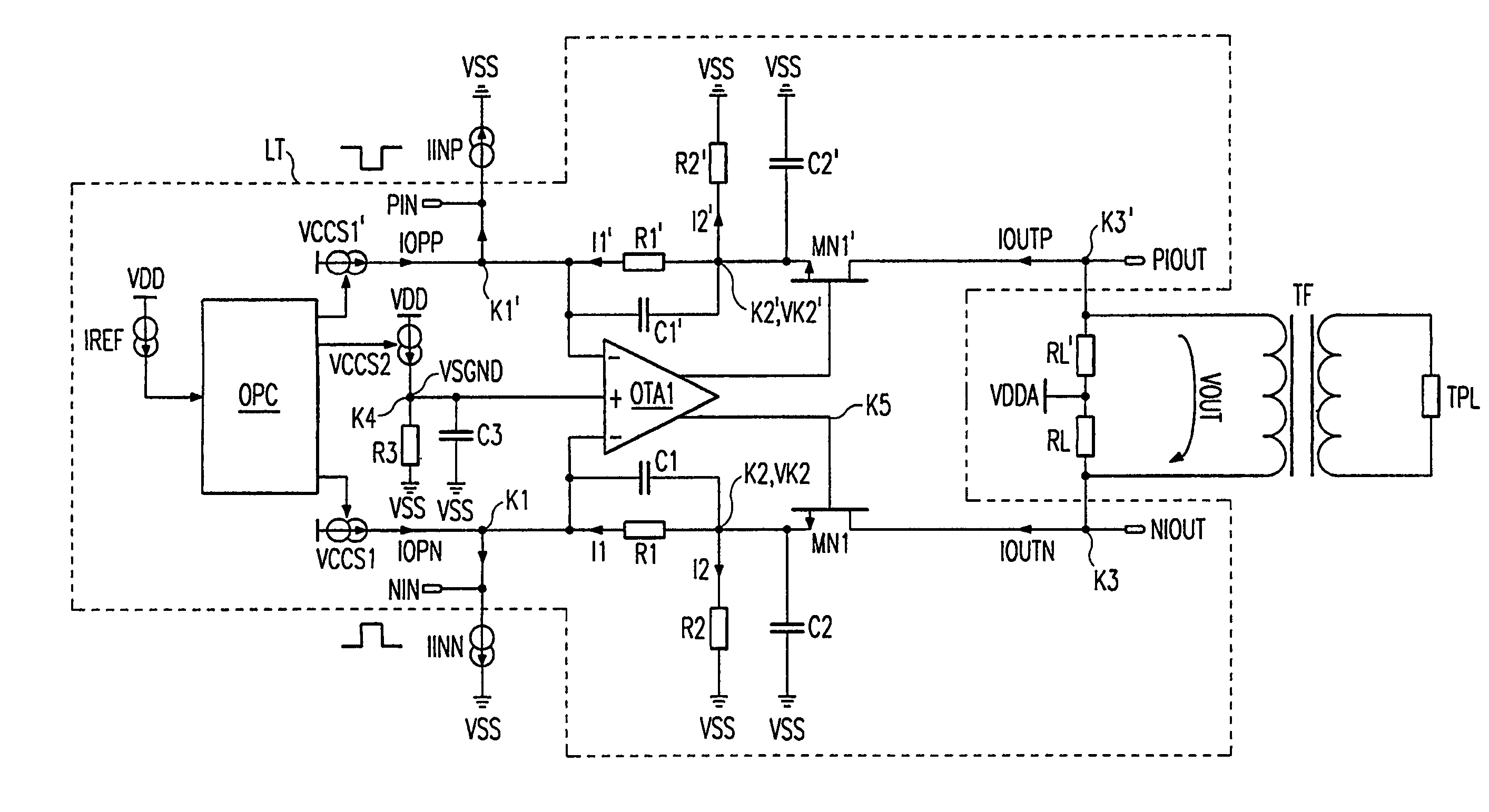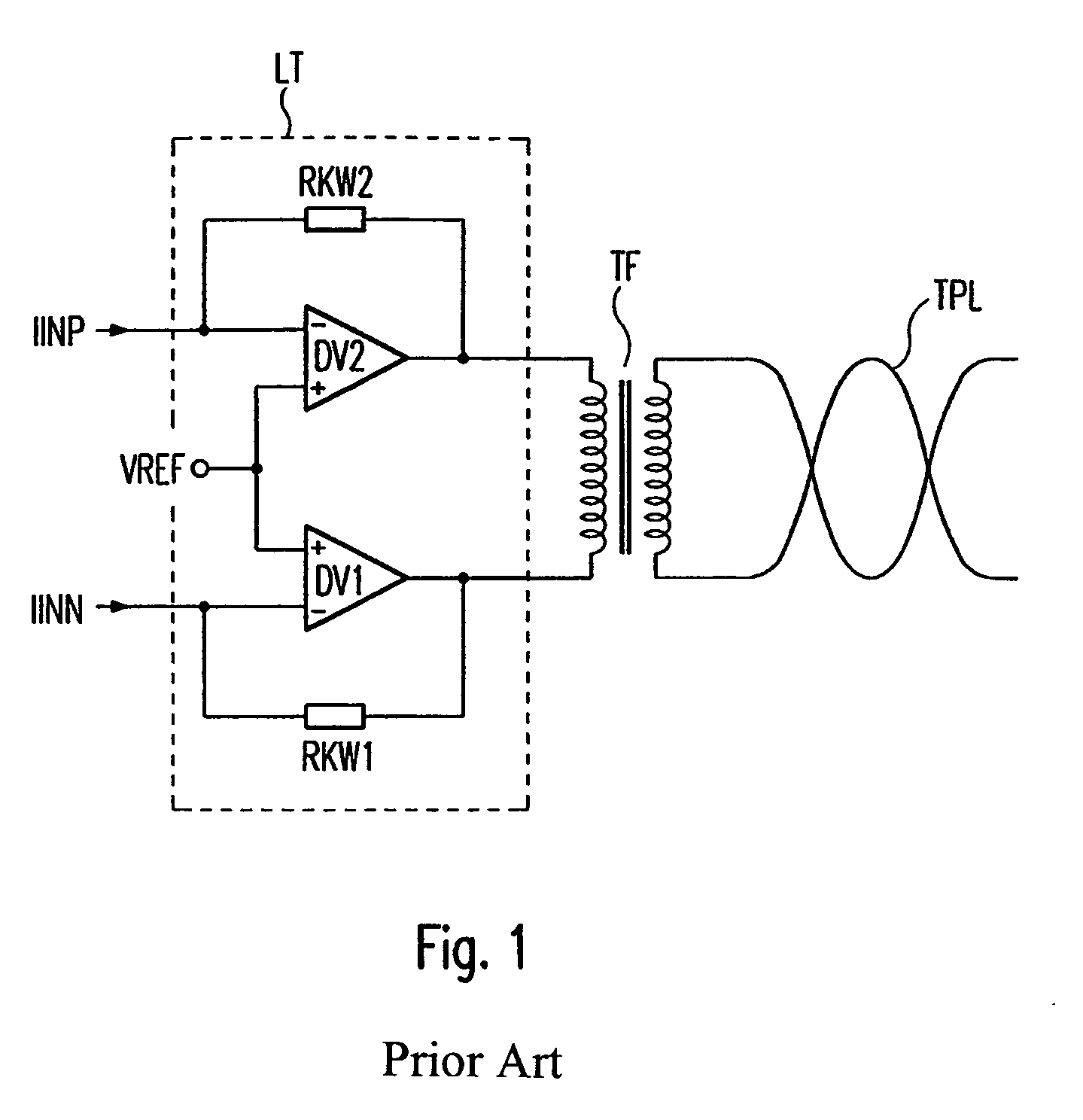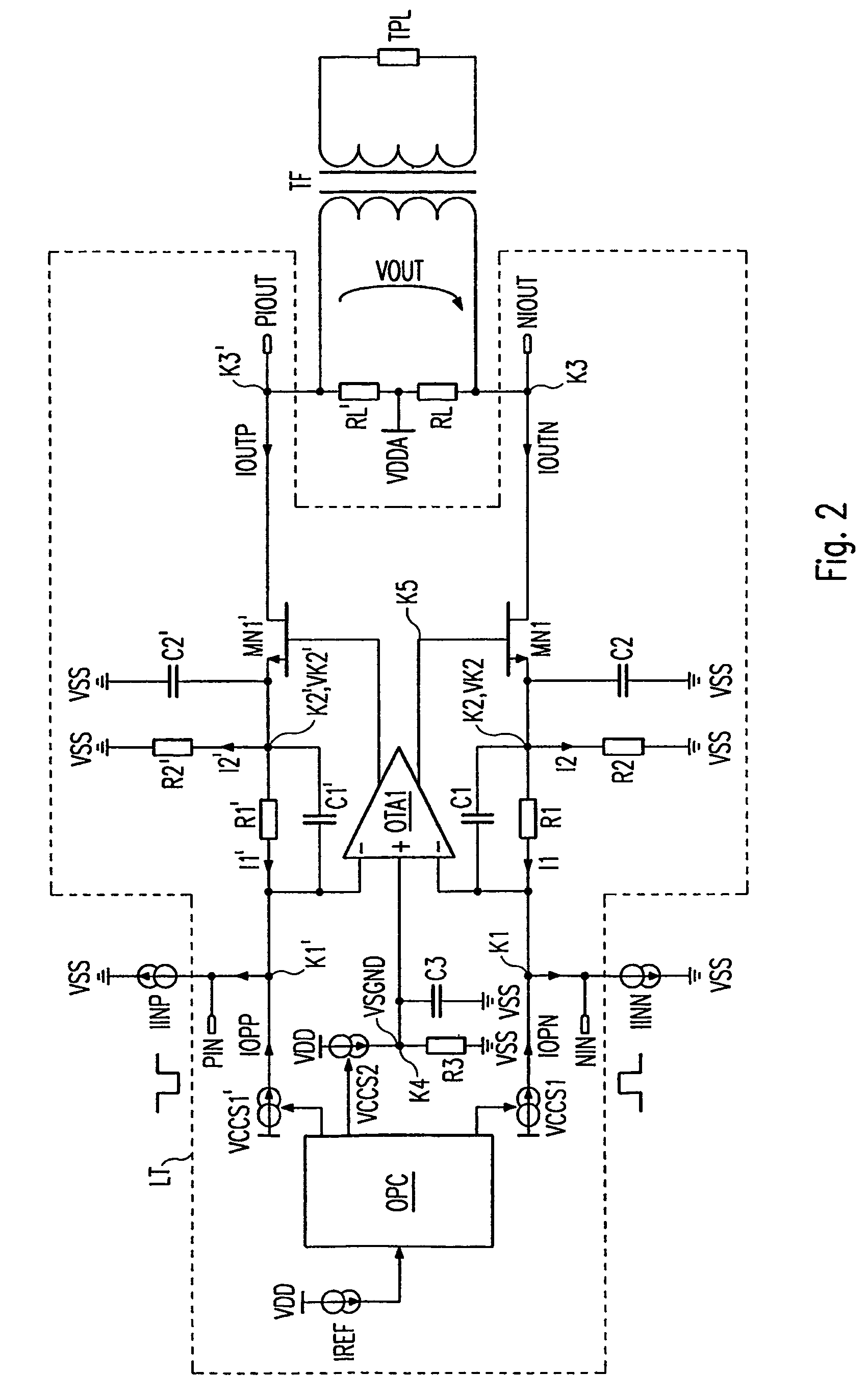Line driver for digital signal transmission
a digital signal and driver technology, applied in repeater/relay circuits, baseband system details, current supply arrangements, etc., can solve the problems of insufficient linearity and speed or bandwidth, insufficient linearity of audio frequency domain transfer characteristics, and distortions in radio frequency range, so as to achieve high linearity in the dc voltage range, high loop gain, and high linearity
- Summary
- Abstract
- Description
- Claims
- Application Information
AI Technical Summary
Benefits of technology
Problems solved by technology
Method used
Image
Examples
Embodiment Construction
[0043]FIG. 2 shows a circuit diagram of a first exemplary embodiment of an inventive pseudo-differential line driver LT produced using CMOS technology. The circuit diagram of the pseudo-differential line driver LT is arranged symmetrically around a line which is imagined to run horizontally through the center of the circuit diagram. For reasons of simplicity and clarity, the subsequent description of the circuit diagram discusses only the bottom half of the circuit diagram in some cases. Since the symmetry of the circuit diagram is obvious, the way in which the top half of the circuit diagram is connected up and works is obtained in a similar manner. In addition, the designations MNx and MPx (where x=1, 2, 3, . . . ) represent n-channel MOSFETs and p-channel MOSFETs, respectively, below.
[0044]The pseudo-differential line driver LT is in the form of a controllable current source. Complementary input currents IINN and IINP, which feed the pseudo-differential line driver LT at inputs N...
PUM
 Login to View More
Login to View More Abstract
Description
Claims
Application Information
 Login to View More
Login to View More - R&D
- Intellectual Property
- Life Sciences
- Materials
- Tech Scout
- Unparalleled Data Quality
- Higher Quality Content
- 60% Fewer Hallucinations
Browse by: Latest US Patents, China's latest patents, Technical Efficacy Thesaurus, Application Domain, Technology Topic, Popular Technical Reports.
© 2025 PatSnap. All rights reserved.Legal|Privacy policy|Modern Slavery Act Transparency Statement|Sitemap|About US| Contact US: help@patsnap.com



